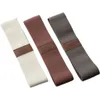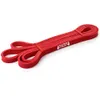Your shoulders need this personal trainer's 1-minute hack for mobility and strength

All it takes is one minute and this personal trainer’s mobility hack for stronger, more stable and looser shoulders. Trust me, I am a trainer myself, and I live for this exercise. Plus, I have had naggy shoulders since my mid-20s, so I know what does and doesn’t work (or feel good).
You’ll just need a pull-up bar or something you can grip and hang from to do this exercise. I also say to perform it with caution; although this move can strengthen and stabilize your shoulder joints, some people can experience pain or pinching, and if you already have an injury or health condition that you’re working with, especially with your rotator cuff, I strongly recommend holding off until you get the all-clear from either a physical therapist or your doctor.
If you’re ready to get started, here’s the shoulder mobility exercise I swear by.
Watch: Hanging shoulder rotations
Check out the demo above from another trainer, who shows exactly how this works.
One of my favorite exercises is the scapula pull-up, which moves your shoulder up and down like a shrug and anti-shrug, and focuses on depression and elevation of the shoulder joints.
However, shoulder rolls, or shoulder rotations, focus on the rolling motion of the shoulder in both directions, and do this using the natural gravity of your body while hanging. You'll elevate and depress, but also retract and protract your shoulders, allowing them to experience more range of motion.
It warms up your joints for movement, stabilizes and strengthens the muscles surrounding the shoulder joints and can help increase activation. This is the perfect way to improve your mind-muscle connection and shoulder mobility if you find this a problematic area in your exercise routine.
Get instant access to breaking news, the hottest reviews, great deals and helpful tips.
What do shoulder rotations work?
You're hanging from a bar, so your grip and forearm strength will be tested, plus your arms, shoulders and upper back. The move also helps activate the lats as you draw the shoulders back and down, plus the rotator cuff muscles that surround the scapulae and help stabilize your shoulders.
While performing this exercise, remember to rotate forward and backward, moving for 30 seconds per side and taking a rest if you need to. Although we get told to work on external rotation the most (we sit in a hunched position too often, which weakens the shoulders and pulls them forward, so we like to open the shoulders and pull them back), you really want to move in both directions to encourage a full range of motion.
If you’re not ready to hang from a bar, support your feet on plates or a box. Almost exaggerate each motion as you draw your shoulders up toward your ears, then pull them back and down. As you push them forward and separate the shoulder blades, take your time, then draw them up to your ears again. Reverse this motion to move in the other direction.

Like scap pull-ups, hanging shoulder rotations can help you develop stronger, more stable shoulders that can withstand injury and improve your posture. Try not to rush this move; instead, move with control and awareness as you rotate your shoulders.
A group of muscles you want to know about is the rhomboids, which help retract, elevate and rotate the scapulae, and the serratus anterior, which help flatten and pull in your shoulder blades. Drills that help train these muscle groups and free up the shoulders are well worth banking, especially if you enjoy lifting heavy weights.
If you have tight shoulders, poor control, limited range, or just want to try something new, shoulder rotations act like a crash course in proper shoulder movement under natural load, and I guarantee you'll feel loose and strong after a few months of consistently practicing them.
Aim to add them to your warm-ups several times per week, or even once if you can, and aim for 30 seconds forward and then back.
Follow Tom's Guide on Google News and add us as a preferred source to get our up-to-date news, analysis, and reviews in your feeds. Make sure to click the Follow button!
More from Tom's Guide
- Australian pull-ups for beginners: How to do them
- Pull-ups vs chin-ups: Which is better for building strength?
- You've been doing pull-ups all wrong here's how to fix them

Sam Hopes is a level 3 qualified trainer, a level 2 Reiki practitioner and fitness editor at Tom's Guide. She is also currently undertaking her Yoga For Athletes training course.
Sam has written for various fitness brands and websites over the years and has experience across brands at Future, such as Live Science, Fit&Well, Coach, and T3.
Having coached at fitness studios like F45 and Virgin Active and personal trained, Sam now primarily teaches outdoor bootcamps, bodyweight, calisthenics and kettlebells.
She also coaches mobility and flexibility classes several times a week and believes that true strength comes from a holistic approach to training your body.
Sam has completed two mixed doubles Hyrox competitions in London and the Netherlands and finished her first doubles attempt in 1:11.
You must confirm your public display name before commenting
Please logout and then login again, you will then be prompted to enter your display name.











